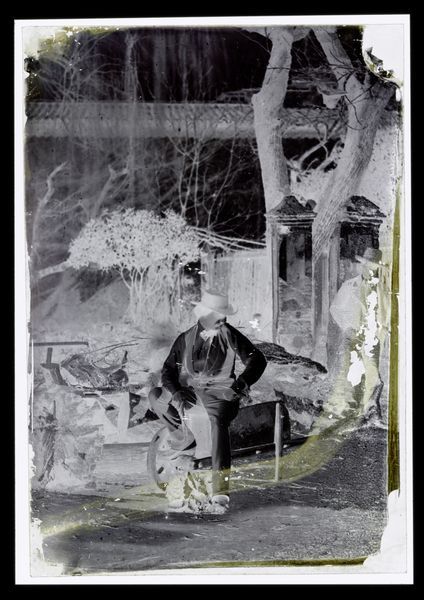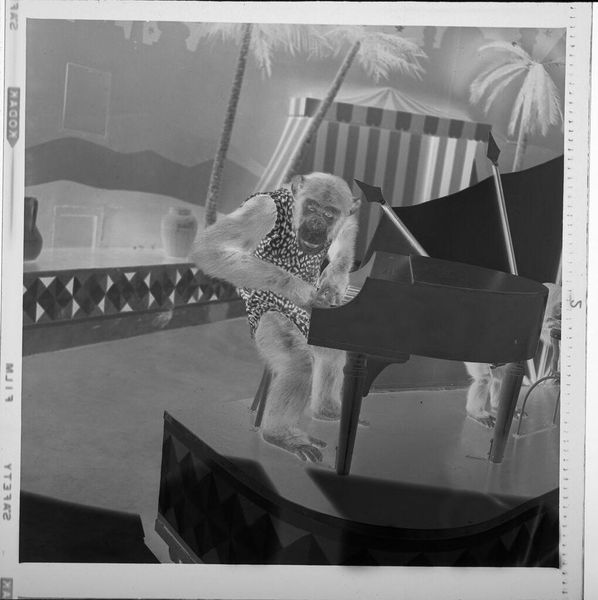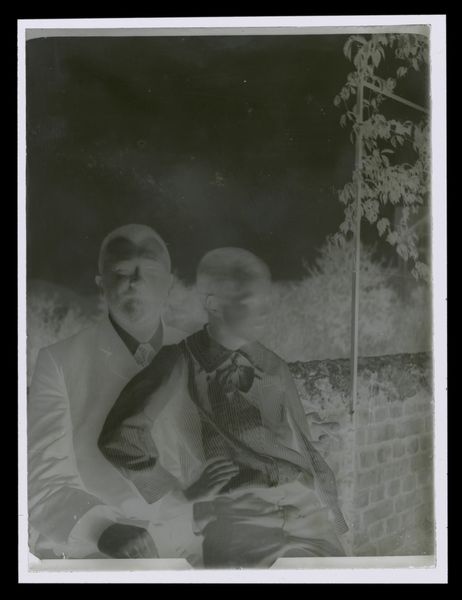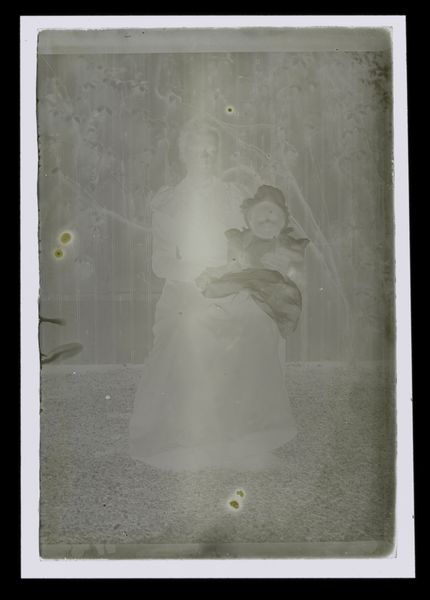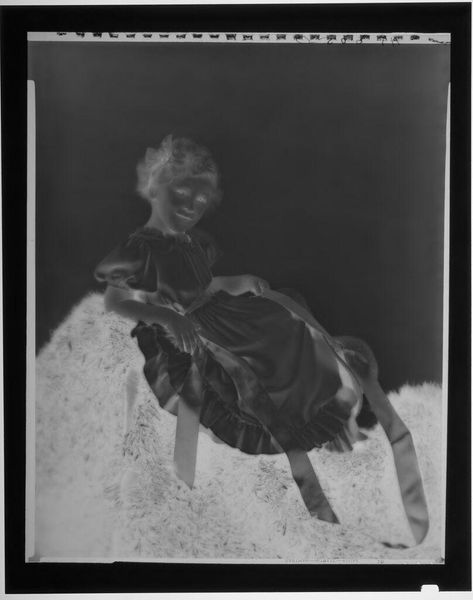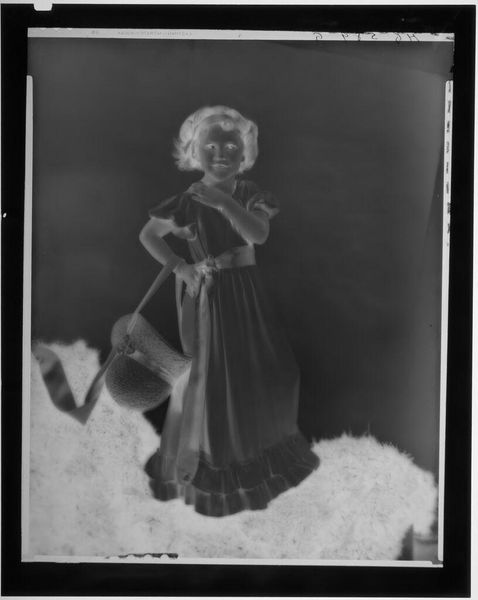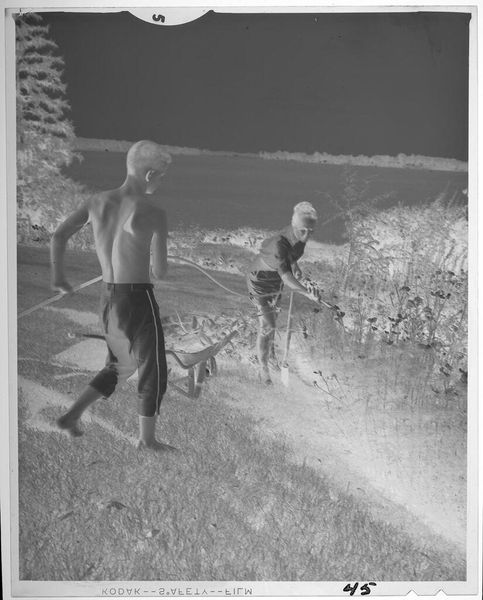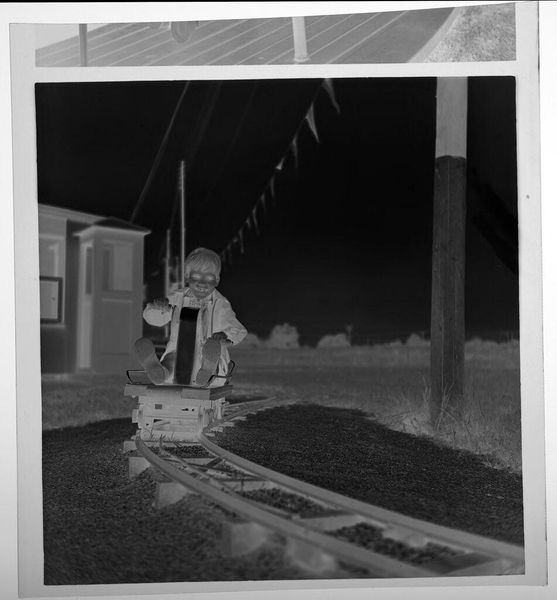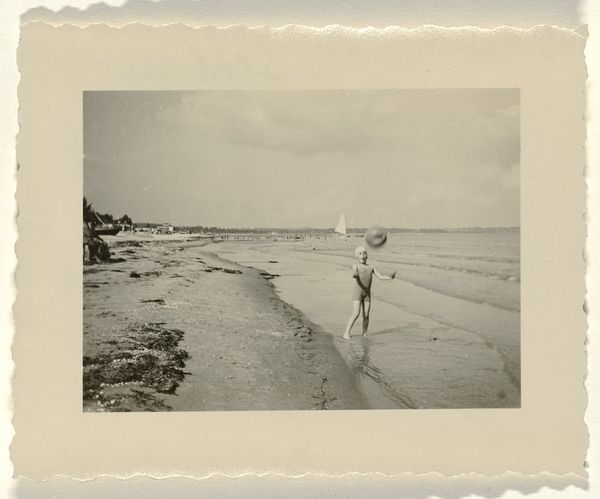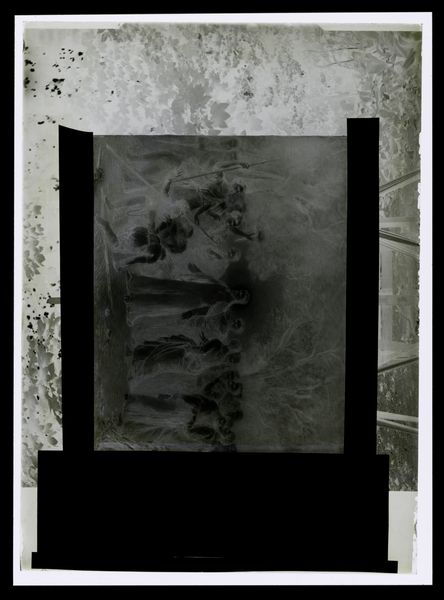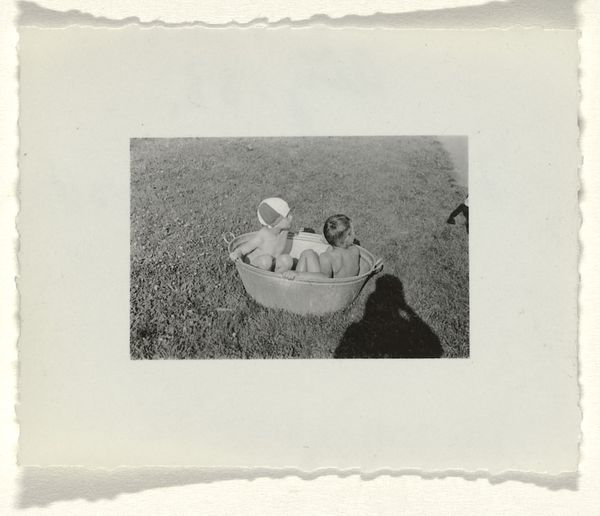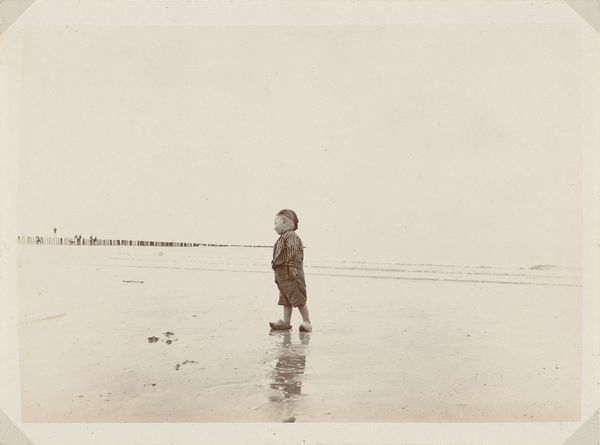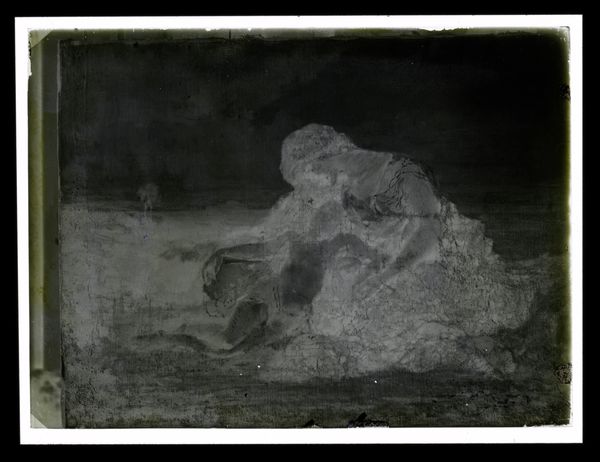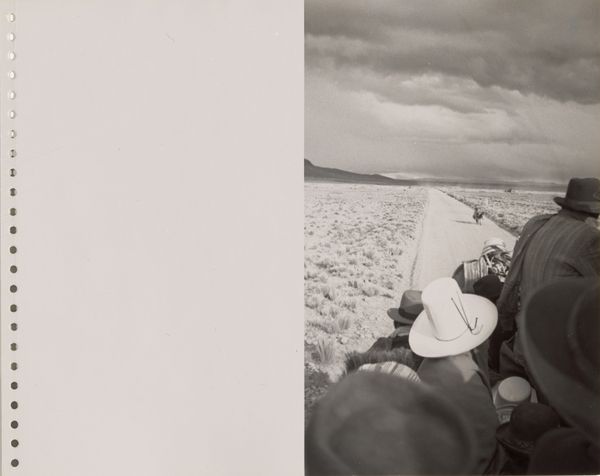
photography, gelatin-silver-print, pendant
#
portrait
#
sculpture
#
digital print
#
figuration
#
photography
#
gelatin-silver-print
#
realism
#
pendant
Dimensions: height 130 mm, width 180 mm
Copyright: Rijks Museum: Open Domain
Curator: Immediately, the inverted tones give this photograph an ethereal quality, like a half-remembered dream. Editor: Indeed. We’re looking at “glasnegatief”, which translates from Dutch to 'glass negative'. Attributed to W.G. Hondius van den Broek, this gelatin-silver print is estimated to have been created sometime between 1895 and 1925. It offers us a fascinating glimpse into the past. Curator: What really grabs me are these figures—two young girls, frozen in time. It evokes feelings of transience, given the nature of photography and the transformation these two may have faced through life. It appears as if they're on a beachside. Editor: It is more than just that initial melancholy. Examining photographs like these opens a window into social norms and cultural values of the time period. Childhood was perceived and represented, from dress codes to expressions, it all points towards the construction of social status through portraits such as this. Curator: Notice their positioning—one standing beside what seems like a small wooden frame, perhaps part of a swing or other child's play device, and the other kneeling as though engaged in play, a little further away. Their expressions, albeit somewhat muted in this inverted image, tell tales of innocence and possibly constraint. Their dark garments create contrast within the composition. It evokes that constant psychological pull of being stuck between constraint and desire. Editor: The choice of glass as a medium is also interesting in itself. It shows a society adapting to a fast pace industrialisation and modernization of art production. Also consider the function of photography in creating and perpetuating stereotypes. This photograph is a good case study of these early approaches. Curator: It’s intriguing how the details emerge from the shadows, creating a visual narrative that both reveals and conceals. This speaks to our memory – always fragmented and open to interpretation. What resonates, though, is the enduring symbolism of childhood – these figures feel eternally present. Editor: Agreed. Early photographic formats can provide nuanced insights into the historical context while prompting thought about our shifting views of personal and shared history.
Comments
No comments
Be the first to comment and join the conversation on the ultimate creative platform.
